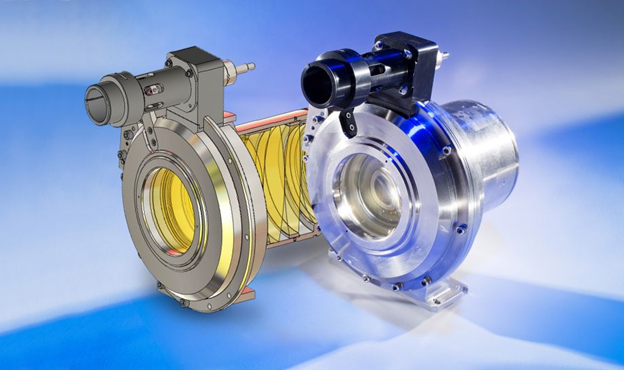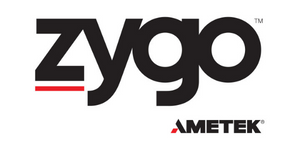Industrial manufacturers are required to do more than simply provide excellent products in the present day. To stay ahead of the competition, all modern businesses are considering the optimal approach to make their development cycle more efficient.
While manufacturers are naturally inclined to keep the maximum number of product development processes in-house, this can be overlooked in the fabrication of optical devices.
Before making a decision, it is critical to evaluate whether buying or making optical components and parts is the ideal approach for the business’ budget, team and goals.
Considerations When Making Optics
In-house optics fabrication and assembly can be incredibly time-consuming and expensive, even though it may offer greater control over the process of product development.
It can be difficult within a small industry to identify the required personnel with a sufficient degree of experience.
It will usually take months to purchase all the required tools but years to accumulate the knowledge of how to master them. The decreased expense of producing optics in-house will not balance the fixed implementation expense unless the estimated volume is high.
Optical infrastructure also cannot be employed for anything other than optics. If the demand for optics gradually declines or disappears, it will not be possible to use the infrastructure for a different purpose.
There is a distinct set of skills necessary in the optics field, which is usually not acknowledged in full. Firstly, precision is crucial. Optics fabrication’s precision levels are quantified in nanometers and microns, much smaller than anything seen in a conventional and familiar machine shop.
A high degree of hand-skill is required that is hard to find. The defects are often so tiny that issues are not visible by eye, which means they have to be deduced, and this is a skill that takes a long time to develop.
There is an increasing demand in modern times for optical devices to have superior functionality, which frequently expands the scope of projects. Fabricating optics is also not synonymous with the fabrication of metals.
In optic fabrication, fragile and brittle materials are manipulated and handled, which must be kept free from scratches and clean.
There is a risk that manufacturers consider optics similarly to software and electronics, where a wide range of issues can be solved through the modification of hardware skills or base coding.
In optical devices, the physics of light are at play, the math can be challenging, it is analog rather than digital and the conclusions attained often appear to be counter-intuitive. This distinct skill set does not apply well to other disciplines.
Along with this, nanometer-level precision is required on the surfaces of optics where extreme temperature controls and tailored test and production equipment are required.
Processes are consistently drifting due to the wear of polishing and grinding equipment. It takes years to understand how to successfully control and manage this kind of process drift.
If the decision is to make instead of buy, the infrastructure for optics fabrication and assembly is vastly different from conventional manufacturing.
The business must invest in expensive optical testing equipment, clean rooms, vibration isolation tables and the means to uphold the highest standard of product cleanliness.
Optics fabrication is a messy and dirty procedure, and it must be carried out directly alongside optical coating, a procedure that must be performed in immaculately clean conditions. It is difficult to balance these conflicting needs in the same facility.
Considerations When Buying Optics
Several factors influence the motivation to make instead of buy optics, such as:
- A clear, long-term requirement for a high quantity of optics
- The ability to circumvent the potential margin that an optics vendor can add to the price
- The product includes intellectual property that must be kept within the confines of the company
- Losing control of schedules when fabrication is outsourced
The high cost of in-house fabrication could be worthwhile in certain cases.
Except for in a minority of cases, these perceived advantages will normally be diminished by the significant benefit of buying from a reputable vendor instead of producing optics in-house.
When making the decision to buy, the time to market is reduced, and up-front investments are minimized. This creates a more predictable and efficient strategy and a shorter time to revenue for the product.
On the topic of expense, the significant capital investment necessary to obtain the equipment, personnel and space needed for in-house optics fabrication and assembly can be removed when choosing to buy.
This is especially relevant as the future is unclear regarding the demand and volumes for optics going forward.
Along with this, external costs are predictable and fixed, with the vendor covering any overruns. Even when demand is suited to low volumes, the company can benefit from the fact that the vendor has high-efficiency processes in place and is prepared for high volumes across a product range.
Optics fabrication is defined by the consistent development of fabrication and metrology technological solutions, which quickly devalues investments.
When optics are bought from a vendor that is constantly optimizing and investing in its equipment, compounding returns are created, which makes it difficult for a small internal shop to compete.

Image Credit: Zygo Corporation
Regarding the scheduling benefits, when a company chooses to buy instead of make optics, the work is outsourced to specialists who will have experience in what is required or will have done something similar in the past.
This means the product can be brought to market more efficiently as no steep learning curve must be crossed.
The expertise of vendors also means that they can develop and design more efficiently, with more confidence and less time-consuming and expensive mistakes. This is vital when the degree of design refinement is high.
Glass lenses, for example, take a long time to manufacture. A small design error can prolong the schedule by several months if the error is not identified until after the optics have been fabricated.
There are also significant and obvious time savings when buying from a vendor that has the experienced personnel and equipment already in place instead of needing to arrange the necessary optics fabrication infrastructure from scratch.
Outsourcing optics fabrication strategically makes sense as the optical component to be purchased is not a vital enabling technology in the final unique end-use product of the customer. This means resources and time can be allocated to other more fundamental and important business areas.
The vendor becomes a risk mitigator for the overall company, an efficient and trustworthy addition to the efforts of the internal personnel focused on the core of the organization.
Vendor Selection — When and Who?
If a business has chosen to purchase instead of produce optics, it is crucial for the company to collaborate with an established vendor and engage at the correct time in the process of product development.
The product implementation stage is typically the best time to engage with a production vendor instead of engaging at the proof of concept or early research stage.
In the earliest phase of product development, the aim is to work quickly, iterate, economize and be agile.
In this phase, the goal is to define the operating window of the product and to ensure the technical specifications are correct, which must be evaluated through the testing of prototypes.
This early phase is typically best handled by internal resources and employing consultants who can offer consistent dedication to the project as they do not incur the cost of a manufacturing vendor.
Businesses tend to view their own research labor as a free element of their fixed costs, while the research team of a production vendor will be overpriced in comparison as it must cover fixed costs.
The stage of product implementation is where it is best to engage with customers. In this phase, the final product’s concept is ready, the proof of concept is complete and the technical performance window of the product is known, which allows a precise specification to be created.
The product’s system-level specification is also well established, including weight, power and size; optical requirements are understood, for example, beam or image quality, numerical aperture, radiometrics and field of view; and environmental requirements are known.
There are some practical tips to bear in mind when it comes to choosing a specific vendor during the product implementation stage.
Firstly, vendors that develop their own equipment for testing, manufacturing and assembling optics are ideal, as they will have greater knowledge of the product and how to efficiently manufacture it and will have much more power for compounding returns.
Secondly, evaluate whether the vendor has experience in fabricating devices that are similar to the end product. This will ensure that fewer mistakes or missteps are made as several lessons will have already been learned, and fulfillment will be more efficient, enhancing costs and adhering to the schedule.
Capable vendors effectively have a supply chain ready to accept the product.
Lastly, find a vendor that can utilize its existing internal infrastructure to manufacture the components, which reduces capital investment expenses and facilitates faster production and decreased costs.

This information has been sourced, reviewed and adapted from materials provided by Zygo Corporation.
For more information on this source, please visit Zygo Corporation.